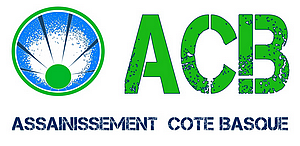Содержание
Valentina is a Software Architecture Consultant who is focused on standardizing software architecture and software development to achieve high quality efficiently. The core benefits is that due to the independence of the Application Core, it ensures separation of concerns and modularity, swappability of databases, UIs and any frameworks, and also enables the system to be testable. These factors increase system quality and decreasing overall total development and maintenance cost. The rider selects their destination, then are presented with an estimated price for their trip. Trip estimation is a business use-case, and it’s the one I’ve selected for our implementation. Figure 2 below outlines the domain within the application structure.
But there’s still a lot of development possible in our current programming languages, and lots of people are working in the space. Any program written using the onion architecture can be viewed as a compiler. The source language is incrementally and progressively translated to the target language . Denotational semantics is a mathematical and compositional way of giving meaning to programs. The meaning of the program as a whole is defined by the meaning of the terms comprising the program. Due to language limitations, the notion of “functor” that we have baked into our functional programming libraries are quite specialized and limited.
However, the limitations of type systems in most object-oriented programming languages generally imply that implementations are final. Pragmatically speaking, what this means is that object-oriented programs written using the onion architecture cannot benefit from any sort of runtime introspection and transformation. While the onion architecture can be implemented in many ways, I prefer implementations using Free-like structures, because of the better separation of concerns and potential for program introspection and transformation.
To be clear, I don’t think Free is the future of functional programming. TheFree structure itself is insufficiently rich, a mere special case of something far more general. But it’s enough to point the way, both to a “post-Free” https://globalcloudteam.com/ world, and to a distinctly algebraic future for programming. The discovery of whole new ways of building programs may depend on our ability to see past the crippled notions of category theory baked into our libraries.
Some things can easily be changed later on but other ones are way harder to change. In the Application layer, the FareRepository is able to retrieve data from external sources and transform it into meaningful Business Entities. Interfaces define behaviour contracts and stand as foundations amongst the layers. Dependency Injection is a necessary evil with this architecture. It causes us to rely heavily on something quite external that binds the entire application together and allows it to function at run-time. That being said, it’s not a big deal and it does not outweigh the pros.
These higher-order abstractions don’t stop at the functor hierarchy. They’re everywhere, over every bit of machinery that has a category-theoretic basis. Banking is defined in terms of its protocol, which we want to log.
Business Logic behaviour is declared as contracts with the use of interfaces in a Object-Oriented context. The higher the coupling, the lower the ability to change and evolve the system. This paper presents a blueprint for building a Virtual Organization for Computational Intelligence that couples N2Grid and CEWebS to create a powerful online community portal for the CI society. This chapter discusses Software Architecture and Product Lines and the design of Software Architectures and its transformation into Family-Based System Development. By now you’ll have noticed that my onion is slightly different from other explanations that can be found online. Some of this is my own interpretation of the rules, and some of it is my pragmatic way of implementing it.
After we’ve defined our high-level program, we can formally express the meaning of this program in terms of the next layer in the onion. Old-fashioned Free code is monomorphic in the functor type. With functor injection, this becomes more polymorphic, but functor injection is just a special case of polymorphic functors whose capabilities are described by type classes.
Interfaces for these are defined in the Domain Services layer — IFareRepostory and IRouteService. RiderFareCalculator is implemented in this layer also, and it depends on the fare repository and route service interfaces declared in the same layer. Note that with this approach, we do not depend on the external service, rather the external service depends on our declared contracts. These interfaces act directly or indirectly on Domain Entities to perform business logic. The Contracts folder also includes the interfaces for the Infrastructure Layer. This lets the Domain Entities and Interfaces exploit the underlying Infrastructure of the application without knowing their implementation.
Application Interfaces Layer
Beginning at the center, each layer is translated into one or more languages with lower-level semantics. Late last year, I wrote my thoughts on what the architecture of modern functional programs should look like. JCGs is an independent online community focused on creating the ultimate Java to Java developers resource center; targeted at the technical architect, technical team lead , project manager and junior developers alike. JCGs serve the Java, SOA, Agile and Telecom communities with daily news written by domain experts, articles, tutorials, reviews, announcements, code snippets and open source projects. We can say that the presentation layer calls in the domain layer while the domain layer calls out to the database layer. As UserDao is now part of the domain layer, it uses domain classes instead of database related classes .
The Domain Layer does not have dependencies on other layers. We will use the business domain of a Ride Sharing/Taxi Booking Application. There is a Rider — someone who needs to travel from point A to point B, and a Driver — the car driver who will pick-up and drop-off the rider in their vehicle. The very centre of the Model, this layer can have dependencies only on itself. It represents the Entities of the Business and the Behaviour of these Entities.

Here we split the UserDao class into an interface and an implementation class . This abstraction gives us more flexibility as we can now change UserDao implementations in the database layer. Layers allows us to build software on top of a lower level layer without knowing the details about any of the lower level layers. In an ideal world we can even replace lower level layers with different implementations. While the number of layers can vary we mostly see three or four layers in practice. You split your application in a presentation, business and data part.
And Thats How You Peel An Onion
Notions ultimately rooted in the limitations of our programming languages. In my opinion, the wonderful polymorphism of monad type classes in MTL is the best thing about MTL , and clearly superior to how early Free programs were built. Since interpreter logic goes into type class instances, this involves tangling concerns. For example, a logging interpreter must also delegate to some other interpreter to expose the semantics of the logging class. At the center of the application, semantics are encoded using the language of the domain model.
The CartItem class in the Supermarket.Core project is such a class. It happens to be an abstract class that has two implementations, QuantityBasedItem and WeightBasedItem, which are also considered Domain Entities. The business domain of the app gravitates around the pricing and purchase of items available at the supermarket. The business rules are based on the popular CodeKata of the same name. To keep things simple, I only implemented the pricing rules for items with a cost that varies based on quantity or weight. I recently built a small ASP.NET Core API that shows my preferred approach to testing cloud apps.
- We will use the business domain of a Ride Sharing/Taxi Booking Application.
- To keep things simple, I only implemented the pricing rules for items with a cost that varies based on quantity or weight.
- When combined with the Free analogue of MTL’s type classes, the approach becomes easier to use and much more polymorphic.
- Due to language limitations, the notion of “functor” that we have baked into our functional programming libraries are quite specialized and limited.
- This layer is the bridge between external infrastructure and the domain layers.
The database layer is now responsible for the conversion between User and UserEntity. First we can easily get the impression that the database is the most important part of the system as all other layers depend on it. However, in modern software development we no longer start with creating huge ER-diagrams for the database layer.
Onion Architecture: A New Approach For Xaas Every
Recursion schemes are useful in lots of places, but where they really shine is complex analysis and transformation of recursive data types. They are used in compilers for translating between higher-level layers (such as a program’s AST) to lower-level layers , and for performing various analyses and optimizations. If we want to express this notion in current programming languages, we have to introduce an entirely new set of abstractions — a mirror functor hierarchy, if you will.

This allows code that is polymorphic in the type of data structure used to represent the operations. The application domain is the core part of the application without any external dependencies. This allows easy testing and modification of domain logic. The code in the presentation layer depends on code in the domain layer which itself does depend on code located in the database layer. One of the most basic principles in software architecture is to create a layered application where each layer has its own responsibilities.
On Architecture And Vegetables
It’s okay to use some NuGet packages in the core but it should be kept to the strict minimum. At the core of the onion, you’ll find the Domain Layer, which is composed of Entities and Interfaces. Together they represent the core business logic of the application.
The Onion Architecture
Adapters located around the domain logic talk with external systems. These adapters can easily be replaced by different implementations without any changes to the domain logic. This little change is reversing the dependency direction between domain and database layers. The domain layer does no longer depend on the database layer. Instead, the database layer depends on the domain layer as it requires access to the UserDao interface and the User class.
Modern Functional Programming: Part 2
This layer is the bridge between external infrastructure and the domain layers. The domain layers often need information or functionality in order to complete business functionality, however they should not directly depend on these. Instead, the application layer needs to depend on the the contracts defined in the Domain Services layer. The onion architecture has proven an enormously useful tool for structuring large-scale functional programs in a composable and modular way. This architecture isolates separate concerns and separate domains, and allows a rigorous treatment of program semantics.
They represent a way to structure the code that clearly separates the domain of the problem from the underlying technologies that implement the solution. Recursion schemes are generic ways of traversing and transforming data structures that are defined using fixed-point types (which are capable of “factoring out” the recursion from data structures). Denotational semantics provide an unprecedented ability to reason about programs in a composable and modular fashion.
If you know about recursion schemes and start using free monads, eventually you discover that Free is a fixed-point type for describing value-producing programs whose unfolding structure depends on runtime values. Beyond this world lies another one, far more powerful, but too abstract for us to even express properly in the programming languages of today. Within functional programming, the choices are Monad Transformers Library , or something equivalent to it ; or Free monads, or something equivalent to them . The call direction can be in and out of the domain center. At least for calling out of the domain center, we need interfaces to assure the correct dependency direction.
I stripped some of the code to make things a little clearer. For example, I don’t have a distributed layer and instead of one Silverlight presentation client I have both a Windows 8 and ASP.NET MVC frontend. Application interface methods will typically be called from a controller in the WebApi Infrastructure layer to perform an action on its behalf. A key tenet of Onion Architecture is that dependencies flow inwards or laterally toward the core. Concretely this means a project that is in an outer layer can refer to a project in an inner layer or the same layer.
Infrastructure Layer
This helps in structuring your application and making sure that you are having a good separation of concerns. One of the primary objectives of this architecture is to increase maintainability. To achieve this level of maintainability, there is significant work involved in firstly setting onion structure up the structure, and secondly maintaining it along the life of the system. Implementation of features may be slower, because there are multiple layers to get through. That’s why Jeffery Palermo recommends it for Enterprise Systems, and not smaller systems non-complex systems.
The Application Layer Implementation depends both on Application Layer interfaces and the Domain Layer. The Core Layer is self-contained and it does not dependent on any other layers. At the system center, we have the Core Layer, composed of the Application Layer and the Domain Layer. Note — The following is my interpretation of this Architecture Pattern and may not be as intended by it’s publishers.

